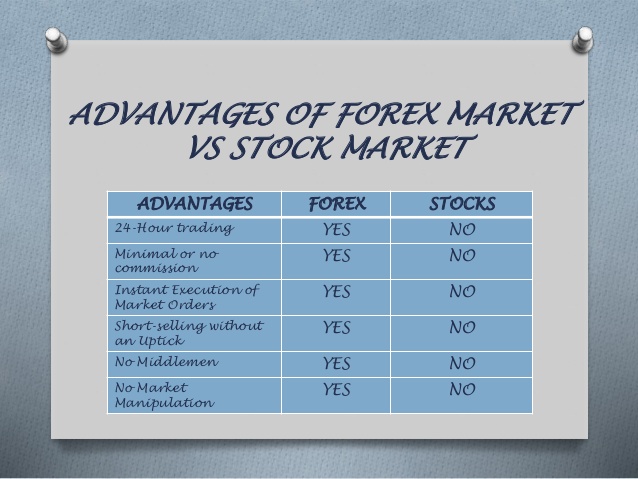
You can invest your money in government bonds. They guarantee guaranteed returns. Government bonds are safer than stocks and other securities. Government bonds can be purchased on the RBI Retail Direct platform or in the secondary market (NSEgoBID). Trading in secondary market bonds is not allowed on the RBI Retail Direct platform.
GILT mutual fonds
Glint refers to government bonds. Generally speaking, a gilt fund is one that invests at least 80% of its assets in government bonds. In the past national bonds were issued under the form of gold-edged certificate. A gilt fund must generally invest at least 80 percent of its assets in government securities for a period of 10 years. Although this fund offers higher returns than other types, it is subject to some risk. A GILT Fund can be a good investment option for those who are looking for moderate returns and security. These funds also offer better asset value than other types of funds. They are also effective in falling markets, although they are at risk due to interest rate volatility.
Investment in gilt funds has one of the main benefits: they are very affordable. They can be a cost-effective alternative to buying individual bonds on secondary markets, and charge low management fees. The GILT mutual funds provide diversification, which reduces volatility. There are different expenses for gilt funds. The expense ratio can also be a factor when choosing the right one.
Discount purchase
Government bonds can be purchased at a discount. This allows the investor to buy securities at less than face value. These bonds are auctioned several times each year. These auctions are open to both competitive and non-competitive investors. An investor can choose to place a competitive bid. This allows them to specify the discount rate or margin they prefer. Investors can keep track of upcoming auctions online.

Discount bonds can be sold before their maturity date. This is because the underlying company is most likely to default. These securities then go on the secondary marketplace at a lower price that their face value. The downside is that discount bonds can be more risky than other types because they are typically issued after other funding methods have failed. Bond rating agencies can downgrade the credit rating of an issuer if the underlying business fails to repay the bonds by the maturity date.
Par receipt
There are many benefits to investing in government bonds. Par receipts can be issued to investors when they invest in government bond. A Par receipt, which is issued by a brokerage firm upon the purchase of a bond, is a document. The receipt has information about the securities you purchased. If you buy a twenty-year bond with 10% coupon, you will receive $50 Par receipts every six month until the bond matures.
You should know that the par receipt will allow you to calculate the yield when you invest in government bonds. This is because government bonds must be purchased at a discount. You're basically buying risk-free bonds. The Treasury Department pays interest every six-months on the bonds that you purchase and then reclaims them at par at maturity.
Inflation index bonds
Consider inflation-index bonds (TIPS), when you invest in government bond investments. TIPS is Treasury Inflation Protected Securities. These bonds increase in value when the Consumer Price Index (CPI) rises. These bonds are subject to federal taxes, however the increases in their principal values are exempted form state and county taxes.
Inflation index bonds, which are government bonds, have their principal changing according to inflation. Simply multiplying the bond face value by the indexation co-efficient will give you the inflation-indexed nominal amount. The indexation coefficient indicates how much the bond’s price fluctuates between its issuance and its maturity. The indexation ratio is calculated using the Ref index as of the day of issuance, and then dividing it with the 10th date of the issue period.

ETFs for Bonds
Bond ETFs invest in government bonds, but their advantages aren't limited to that. They are an excellent way to invest in bonds, without the need to research individual bonds. These funds often have a small portfolio which can be attractive for beginning investors.
The best bond ETFs right now offer excellent returns, despite rising inflation and interest rates. TIPS investments and ultra-short-term bond investing have proven to be very profitable during these times of rising borrowing costs as well as higher commodity prices. Meanwhile, inflation has moderated in the United States, with the most recent consumer price index showing moderate growth.
FAQ
Why is a stock called security.
Security is an investment instrument that's value depends on another company. It can be issued as a share, bond, or other investment instrument. If the underlying asset loses its value, the issuer may promise to pay dividends to shareholders or repay creditors' debt obligations.
What is a mutual funds?
Mutual funds are pools that hold money and invest in securities. Mutual funds provide diversification, so all types of investments can be represented in the pool. This reduces the risk.
Professional managers are responsible for managing mutual funds. They also make sure that the fund's investments are made correctly. Some funds offer investors the ability to manage their own portfolios.
Mutual funds are more popular than individual stocks, as they are simpler to understand and have lower risk.
What are some advantages of owning stocks?
Stocks are more volatile than bonds. Stocks will lose a lot of value if a company goes bankrupt.
However, if a company grows, then the share price will rise.
Companies often issue new stock to raise capital. This allows investors to buy more shares in the company.
To borrow money, companies can use debt finance. This allows them to access cheap credit which allows them to grow quicker.
If a company makes a great product, people will buy it. As demand increases, so does the price of the stock.
The stock price should increase as long the company produces the products people want.
Statistics
- For instance, an individual or entity that owns 100,000 shares of a company with one million outstanding shares would have a 10% ownership stake. (investopedia.com)
- Even if you find talent for trading stocks, allocating more than 10% of your portfolio to an individual stock can expose your savings to too much volatility. (nerdwallet.com)
- Our focus on Main Street investors reflects the fact that American households own $38 trillion worth of equities, more than 59 percent of the U.S. equity market either directly or indirectly through mutual funds, retirement accounts, and other investments. (sec.gov)
- "If all of your money's in one stock, you could potentially lose 50% of it overnight," Moore says. (nerdwallet.com)
External Links
How To
How to open and manage a trading account
To open a brokerage bank account, the first step is to register. There are many brokers out there, and they all offer different services. Some charge fees while others do not. Etrade, TD Ameritrade and Schwab are the most popular brokerages. Scottrade, Interactive Brokers, and Fidelity are also very popular.
Once your account has been opened, you will need to choose which type of account to open. You should choose one of these options:
-
Individual Retirement Accounts (IRAs)
-
Roth Individual Retirement Accounts
-
401(k)s
-
403(b)s
-
SIMPLE IRAs
-
SEP IRAs
-
SIMPLE SIMPLE401(k)s
Each option offers different benefits. IRA accounts are more complicated than other options, but have more tax benefits. Roth IRAs permit investors to deduct contributions out of their taxable income. However these funds cannot be used for withdrawals. SIMPLE IRAs have SEP IRAs. However, they can also be funded by employer matching dollars. SIMPLE IRAs are simple to set-up and very easy to use. They enable employees to contribute before taxes and allow employers to match their contributions.
You must decide how much you are willing to invest. This is your initial deposit. A majority of brokers will offer you a range depending on the return you desire. You might receive $5,000-$10,000 depending upon your return rate. The conservative end of the range is more risky, while the riskier end is more prudent.
Once you have decided on the type account you want, it is time to decide how much you want to invest. There are minimum investment amounts for each broker. These minimum amounts vary from broker-to-broker, so be sure to verify with each broker.
After you've decided the type and amount of money that you want to put into an account, you will need to find a broker. Before selecting a brokerage, you need to consider the following.
-
Fees - Be sure to understand and be reasonable with the fees. Many brokers will try to hide fees by offering free trades or rebates. Some brokers will increase their fees once you have made your first trade. Avoid any broker that tries to get you to pay extra fees.
-
Customer service - Find customer service representatives who have a good knowledge of their products and are able to quickly answer any questions.
-
Security - Make sure you choose a broker that offers security features such multi-signature technology, two-factor authentication, and other.
-
Mobile apps: Check to see whether the broker offers mobile applications that allow you access your portfolio via your smartphone.
-
Social media presence - Check to see if they have a active social media account. If they don’t have one, it could be time to move.
-
Technology - Does the broker utilize cutting-edge technology Is the trading platform user-friendly? Are there any problems with the trading platform?
Once you've selected a broker, you must sign up for an account. While some brokers offer free trial, others will charge a small fee. Once you sign up, confirm your email address, telephone number, and password. Next, you'll need to confirm your email address, phone number, and password. Finally, you'll have to verify your identity by providing proof of identification.
Once verified, your new brokerage firm will begin sending you emails. It's important to read these emails carefully because they contain important information about your account. The emails will tell you which assets you are allowed to buy or sell, the types and associated fees. Keep track of any promotions your broker offers. These could include referral bonuses, contests, or even free trades!
Next is opening an online account. Opening an account online is normally done via a third-party website, such as TradeStation. Both of these websites are great for beginners. To open an account, you will typically need to give your full name and address. You may also need to include your phone number, email address, and telephone number. After this information has been submitted, you will be given an activation number. This code is used to log into your account and complete this process.
You can now start investing once you have opened an account!